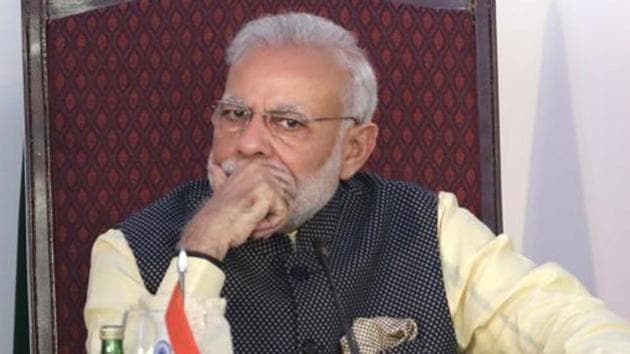What will shape PM Narendra Modi’s new cabinet, poll compulsion or good governance?
In his last reshuffle in July 2016, the PM had dropped five ministers and demoted two. He had inducted 19 ministers, some of them keeping the then upcoming Uttar Pradesh and Uttarakhand polls in mind.
Will Prime Minister Narendra Modi seek to fill the gaps in governance when he revamps his team, on Sunday morning? Or, will he make it another exercise in political symbolism by inducting leaders from poll-bound states and focusing on caste and regional representation?

It’s perilous to try to read Modi’s mind but going by the list of ministers who have resigned – seldom a voluntary act on their part—the Prime Minister looks inclined to deal with NPAs or non-performing assets in his team. Kalraj Mishra, Uma Bharti, Rajiv Pratap Rudy, and Sanjiv Baliyan hardly made any mark as ministers although they held important portfolios such as micro, small and medium enterprises, water resources, Ganga rejuvenation, and skill development.
Dropping political heavyweights such as Mishra and Bharti from the government is certainly a tough call but it could turn out to be a cosmetic exercise if the PM does not find the right talent out of the ruling party’s bench strength to replace them and rev up their ministries. In his last reshuffle in July 2016, the PM had dropped five ministers and demoted two but that did not seem to have rattled or inspired non-performing ministers who survived. He had inducted 19 new ministers of state but most of them have nothing to show in terms of performance.
The PM did try to send a message to other ministers by replacing Smriti Irani with Prakash Javadekar as human resource development minister, changing Choudhury Birendra Singh’s rural development portfolio and bringing in a river conservationist and social activist, Anil Dave, to run the ministry of environment, forest and climate change. But none of these changes produced any significant dividends in terms of the functioning of these ministries.
It was the political message in the last reshuffle that might have worked for the ruling BJP. Modi inducted five Dalits—including Ajay Tamta from Uttarakhand-- and added three ministers from Uttar Pradesh, taking the tally of ministers from the then poll-bound state to 15. Kalraj Mishra, a prominent Brahmin leader from UP, escaped the axe then. The BJP swept the assembly polls in UP and Uttarakhand later, although it’s difficult to gauge the exact electoral impact of these changes in the Central government.
The BJP has high stakes in Gujarat and Himachal Pradesh that will go to polls in November this year and in Karnataka where elections are slated next year. The PM might again be tempted to increase representation of these states in his government.
Saturday’s reshuffle could probably be the last opportunity for Modi in his current term to build a dream team that has the competence and dynamism to carry out his vision of development and fulfil his promises to the people in the remaining 21 months of the BJP-led NDA government. While the Prime Minister’s Office has led from the front working overtime to guide and monitor the functioning of all ministers, the gaping gap between promises and deliveries—be it jobs or skill development or education reforms—is illustrative of how a weak team can fail a competent leader. On Saturday evening, people will get an indication of whether the leader is ready to go for broke.





